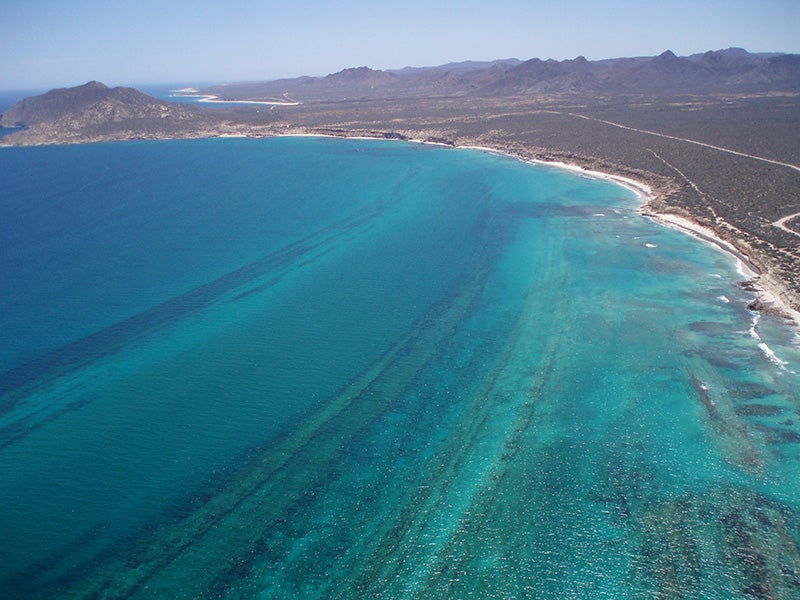Tri-National Organization Calls for Investigation of Mexico's OK on Coastal Projects in Gulf of California
Development projects in Mexico may violate Mexico's own environmental laws

This page was published 11 years ago. Find the latest on Earthjustice’s work.
This is a guest blog post by Earthjustice and AIDA partner and client Carolina Herrera, a Latin America Advocate in NRDC’s International Program. This blog post was originally posted on NRDC’s Switchboard.
In a move that could help strengthen environmental governance in Mexico, the Secretariat of the North American Commission on Environmental Cooperation (CEC) has called for an investigation into whether key regulations have been effectively enforced during the review and authorization process of major coastal tourism projects along the Gulf of California. The Commission on Environmental Cooperation is an international body established under the North American Free Trade Agreement to promote cooperation among Canada, Mexico and the U.S. on environmental issues of continental concern.
The CEC’s decision is in response to a 2013 citizen’s petition filed by 11 groups from Mexico and the United States, which highlighted significant weaknesses during the permitting process of four high-impact coastal tourism resorts proposed near critical marine habitat, including the controversial Cabo Cortés project proposed in the vicinity of Cabo Pulmo National Park.
The CEC’s governing body, made up of the top environmental officials in Mexico, the U.S. and Canada, must now decide if they will follow the Secretariat’s recommendation and authorize the development of a factual record to shed light on the situation. A factual record would make a significant contribution toward strengthening the environmental impact review process of similar high-impact projects in the Gulf of California and protecting the region’s fragile marine habitat and ecosystems. This is particularly important as we continue to see an ongoing interest in developing large scale projects in the region—with the most recent example being the controversial Cabo Dorado project.
The citizens’ petition to the CEC, filed on behalf of NRDC and its partners last year, pointed to four cases where projects received key permits and authorizations despite crucial weaknesses in their environmental impact statement, potentially endangering nearby critical ecosystems:
- The Cabo Cortés proposal would have built a massive tourism and real-estate resort, complete with marina and golf courses, just north of and adjacent to the Cabo Pulmo National Park, one of the world’s most robust marine reserves and home to the healthiest and possibly oldest coral reef in the American Pacific.
- The Playa Espíritu project put at risk the Marismas Nacionales wetlands, the most extensive and well-preserved mangrove forest in western Mexico.
- The Paraíso del Mar project, already under construction, and the neighboring Entre Mares proposal could impact the Bay of La Paz, some of the richest waters in the Gulf of California and critical nesting ground for migratory birds.
After assessing the petition and the Government of Mexico’s official response, the CEC Secretariat agreed with the petitioners that the development of a factual record could help clarify whether key regulations applicable during the review and authorization process of coastal projects have been adequately enforced. Specifically, the CEC recommended that the factual record look at whether provisions governing the use of best available information during the preparation of environmental impact statements have been adequately enforced; and whether there has been proper consideration of cumulative impacts, fragmentation of projects, protected species and enforcement of Mexico’s obligations under the Ramsar Convention on wetlands of international importance when environmental impact authorizations are issued.
The CEC decided not to call for looking at the controversial Cabo Cortés case specifically because its environmental authorization was (fortunately) already revoked during the previous government. However, the outcome of a factual record under the petition would still be very pertinent to Cabo Pulmo. Since the Cabo Cortés permits were overturned two other versions of the project have been subsequently proposed on the exact same lands: first Los Perícues and more recently Cabo Dorado. Mexico’s environmental authorities made the right move earlier this year by rejecting Cabo Dorado’s environmental impact statement. But it’s clear that interest in developing the lands has not waned. This makes it imperative to have as much transparency and clarity as possible about how environmental regulations are being implemented during project review and permitting.
A factual record would help shed light on where and how the environmental authorization process must be strengthened and help Mexico move toward stronger and better environmental governance in the Gulf of California. Continuing to strengthen this process and other protections are a critical part of keeping the Cabo Pulmo reef, and the Gulf of California’s other marine treasures safe for generations to come.
The International Program partners with organizations and communities around the world to establish, strengthen, and enforce national and international legal protections for the environment and public health.